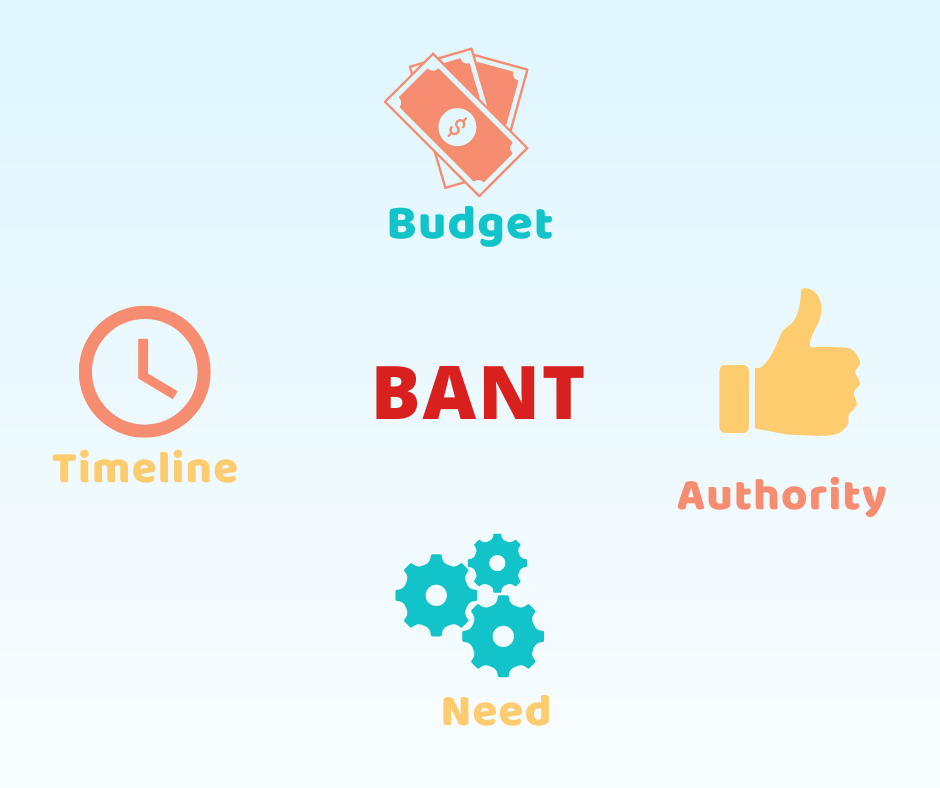In the competitive landscape of sales, identifying and nurturing high-potential leads is critical to driving growth and maximizing revenue. The BANT Framework—Budget, Authority, Need, and Timeline—stands as a proven methodology to streamline the lead qualification process. This article delves into the nuances of the BANT framework, providing a thorough guide for sales teams to enhance lead qualification, accelerate the sales cycle, and improve close rates.
Understanding the BANT Framework
What is BANT?
BANT is a sales qualification framework designed to assess a lead’s potential by evaluating four key criteria: Budget, Authority, Need, and Timeline. This framework helps sales teams prioritize their efforts on leads most likely to convert into paying customers.
- Budget: Determines if the lead has the financial capacity to purchase the product or service.
- Authority: Identifies if the lead has the decision-making power or significant influence over the purchase.
- Need: Assesses if the lead has a genuine need for the product or service.
- Timeline: Evaluates the timeframe within which the lead intends to make a purchase decision.
Creating an Ideal Customer Profile (ICP)
The initial step in the BANT process is to develop a clear Ideal Customer Profile (ICP). This involves analyzing your existing customer base to identify common characteristics among your most valuable clients. Key attributes to consider include:
- Industry type
- Company size
- Annual revenue
- Key challenges and pain points
A well-defined ICP serves as a blueprint for identifying and engaging with high-potential leads that closely align with your ideal customer characteristics.
Evaluating Budget Compatibility
Understanding a prospect’s budget is crucial to determine if they can afford your solution. Go beyond basic inquiries to gather insights into their financial readiness and expectations. Key questions to ask include:
- Have you allocated a budget range for this purchase?
- How important is cost in your decision-making process?
- What is your current expenditure on similar solutions?
Aligning your pricing structure with the prospect’s budgetary constraints and highlighting the return on investment (ROI) can effectively qualify serious buyers from those merely exploring options.
Assessing Decision-Making Authority
Identifying the decision-makers within a prospect’s organization is essential for a successful sale. B2B purchases often involve multiple stakeholders, each with distinct priorities. To navigate this, consider asking:
- Who is part of the decision-making team?
- Who initiated the search for this solution?
- Who holds the final decision-making authority?
Understanding the organizational hierarchy and engaging with key influencers can significantly increase the likelihood of closing the sale.
Identifying and Addressing Prospect Needs
A deep understanding of the prospect’s pain points and business challenges is vital. Engage in meaningful conversations to uncover their needs and how your solution can address them. Key questions include:
- What are your primary challenges this year?
- How do these challenges impact your operations?
- What are your growth objectives?
Align your product’s features with the prospect’s needs to demonstrate value and relevance, thereby increasing the chances of conversion.
Establishing a Purchase Timeline
Determining the prospect’s timeline for making a purchase decision helps prioritize leads and tailor your follow-up strategy. Questions to ask include:
- How urgent is the need to resolve this issue?
- What is your timeline for making a decision?
- By when do you expect to see results from the implementation?
Understanding the urgency and timeline allows you to apply appropriate sales tactics and maintain engagement with prospects at different stages of the buying cycle.
Tracking BANT Metrics
To measure the effectiveness of the BANT framework, monitor key metrics such as:
- Qualified Lead Percentage: The proportion of leads that meet BANT criteria.
- Average Deal Size: The average value of closed deals.
- Sales Cycle Length: The time taken to convert a qualified lead into a customer.
- Conversion Rate: The percentage of qualified leads that become customers.
- Revenue from Qualified Leads: The total revenue generated from qualified leads.
Regularly tracking these metrics provides insights into the sales process and highlights areas for improvement.
Best Practices for Implementing BANT
- Team Training: Ensure that your sales and marketing teams understand the BANT framework and its benefits. Provide training on effective questioning techniques and the use of digital tools to streamline the qualification process.
- CRM Integration: Utilize customer relationship management (CRM) systems to track and analyze data. CRM tools can help manage the BANT process, schedule meetings, and record interactions.
- Flexible Application: Use BANT as a guide rather than a strict checklist. Adapt the sequence and focus based on the prospect’s responses and buying journey.
Conclusion
The BANT framework remains a cornerstone of effective lead qualification for any sales team. By systematically evaluating a prospect’s Budget, Authority, Need, and Timeline, sales professionals can prioritize high-potential leads, optimize resource allocation, and enhance close rates. Implementing BANT with a strategic approach and continuous monitoring of key metrics ensures sustained success in the competitive market. By leveraging the BANT framework and adhering to these best practices, sales teams can significantly improve their lead qualification process and drive sustainable growth.
